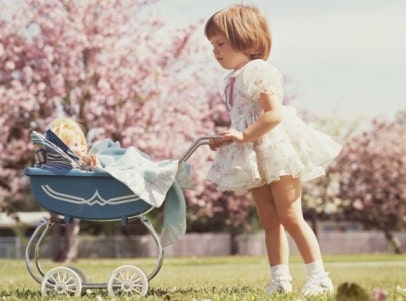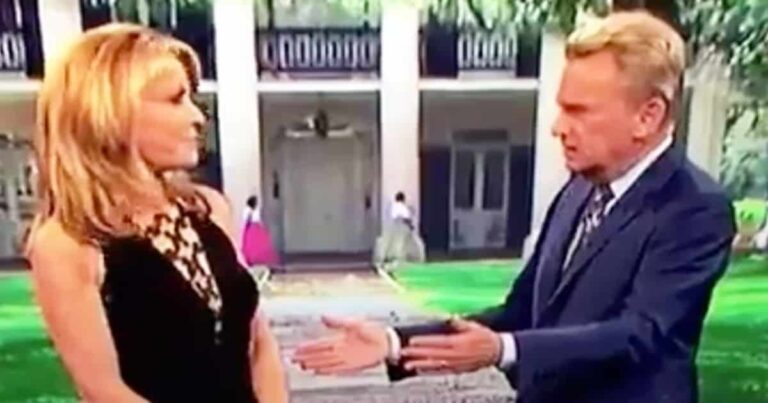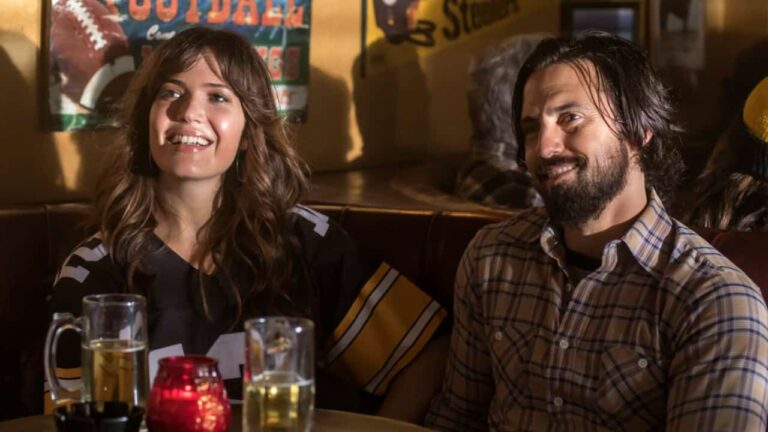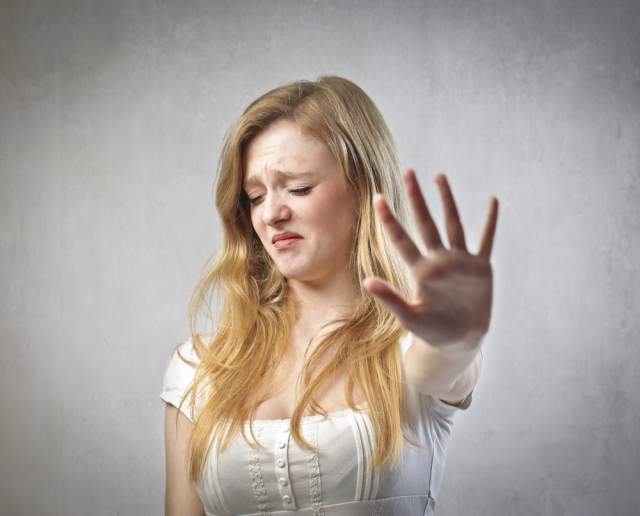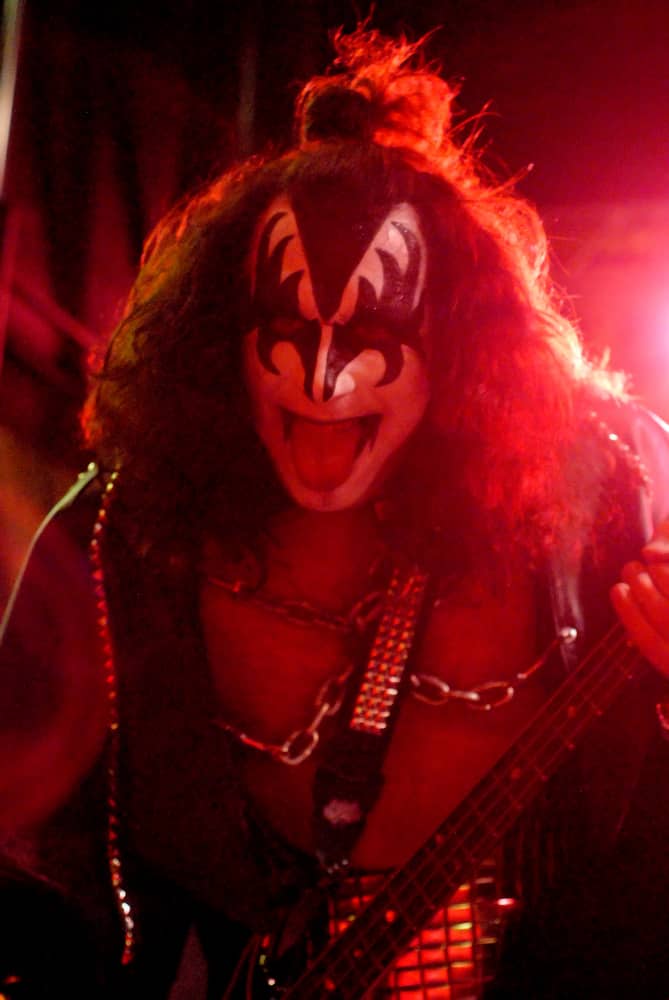38 Behind The Scenes Secrets From The Original Wizard of Oz
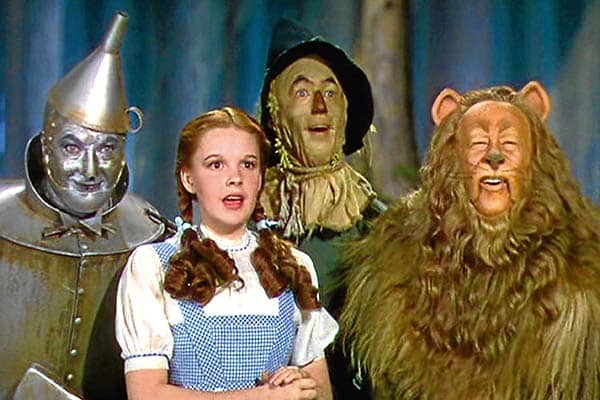
The Wizard of Oz is one of those great films that is a guaranteed crowd-pleaser. Kids love it. Parents love it. Grandparents love it. It doesn’t matter how many times we’ve seen Dorothy (Judy Garland) and her dog, Toto, make their way to Emerald City, we’ll be singing and dancing along with them every single time. You and the kiddos might know “Over the Rainbow” by heart, but do you know these The Wizard of Oz behind-the-scenes secrets? (This isn’t a test; we’re going to help you out.)
The classic film has a backstory and off-camera secrets that are as interesting as what Dorothy and her gang get up to during the flick. From actor switch-ups to costume changes that will blow your mind, these The Wizard of Oz facts will give you a newfound appreciation for the film. They might even change the way you watch it. And you can share the information with your friends and family the next time you’re watching the 1939 movie. Follow this digital yellow brick road and scroll down to see 38 The Wizard of Oz behind the scenes secrets.
Ray Bolger and Buddy Ebsen switched roles.
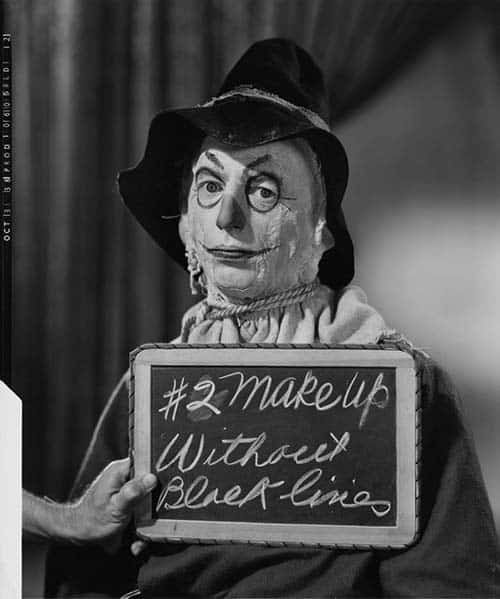

How often do we hear about actors switching parts? Ray Bolger was originally cast as the Tin Man and Frank “Buddy” Ebsen secured the role of the Scarecrow. Apparently, Ray wasn’t completely happy with his part. He dreamed of playing the Scarecrow because one of his idols played the part in a stage production he saw. It had such a profound impact on him that it inspired him to be an actor. Ray somehow managed to convince producer Mervyn LeRoy to give him the part of the Scarecrow. Buddy was cool with the trade and both actors ended up going into rehearsals with Ray now in his beloved Scarecrow part and Buddy as the Tin Man.
Buddy Ebsen became ill from the Tin Man’s silver paint.
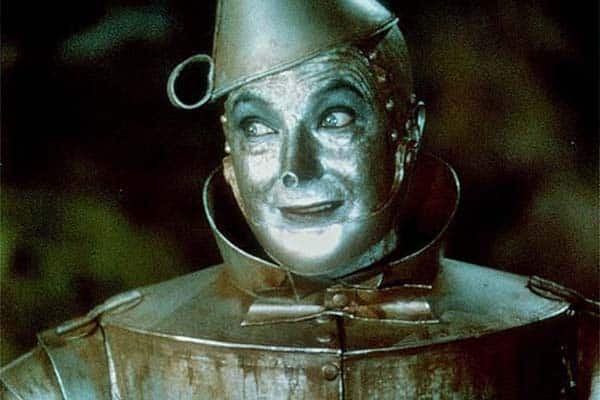

After the aforementioned character swap, Buddy Ebsen became the “original” Tin Man. Things were going well. The vaudeville actor got through rehearsals and recorded all of his songs. But, when it came time to film in the iconic Tin Man’s silver look, Buddy became ill. He experienced shortness of breath, muscle aches, and other alarming symptoms. He was hospitalized and doctors realized his symptoms were caused by aluminum dust in the silver makeup. “I almost disappeared over the rainbow because of the poisonous aluminum dust in my silvery makeup,” he said. “It cost me a big medical bill.” (It was said he had breathing problems for the rest of his life.) Poor Buddy was admitted to the hospital and forced to drop out of production. Jack Haley replaced Buddy and the makeup was changed to a safer formula. A lot of Buddy’s work was re-recorded, but there are parts we can still hear him. FYI: Buddy lived to the ripe old age of 95, even with those filming-related breathing issues.
The studio lights during filming were extremely hot.
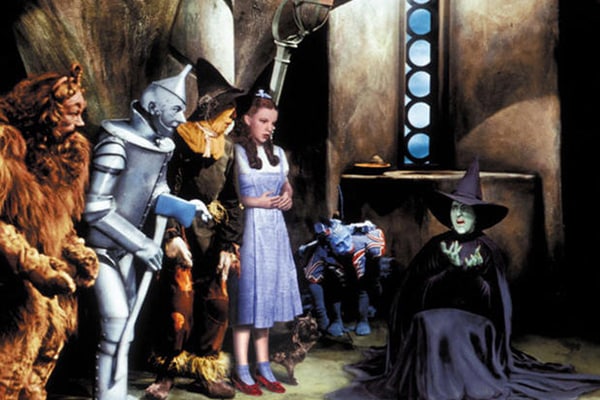

This is one of The Wizard of Oz behind-the-scenes secrets that we’d never have considered while watching the movie. (We don’t see any dripping makeup or wilted costumes.) It has been reported that temperatures soared to 100°F on-set during filming. The reason had to do with the Technicolor recording technology. It required a lot more lighting than black-and-white films. Imagine being the poor Cowardly Lion in that heat. Keeping hydrated was a big factor. Some actors and actresses have said that the bright, hot lighting during the movie’s production caused eye damage. It makes you look at health and safety at work in a new — uh — light.
The film was actually based on a novel.
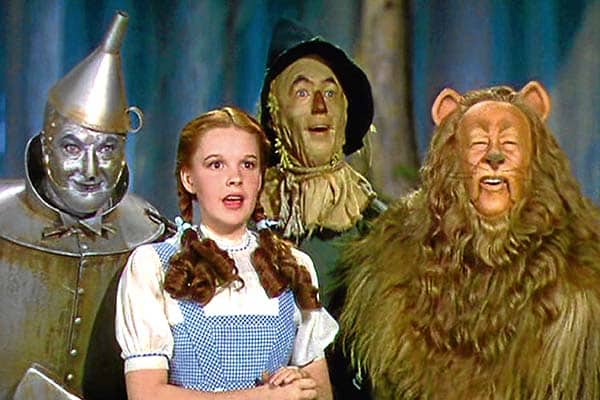

There are countless movies that have been based off of books. But, how many people know that The Wizard of Oz is one of them? We bet you didn’t. Writer Lyman Frank Baum and illustrator W.W. Denslow published The Wonderful Wizard of Oz in 1900. The book was a success and the author went on to write thirteen(!) more books related to the characters in the Land of Oz. If this is news to you, you now have plenty of bedtime story reading material to catch up on. Just be aware that there are some noticeable changes between the book and the iconic film.
There are rumors that Shirley Temple was asked to play Dorothy.
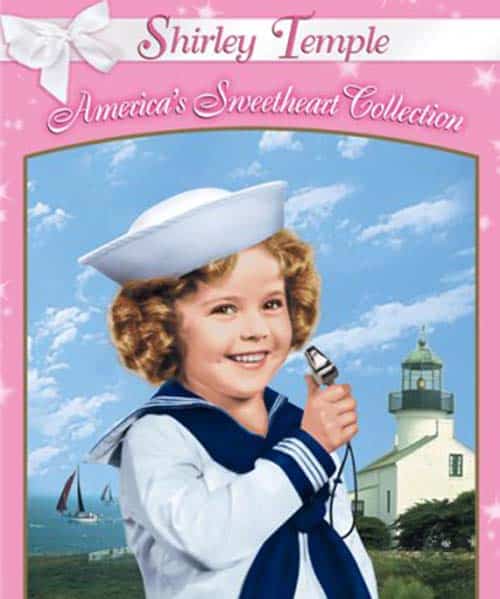

Shirley Temple was a massive child star in Hollywood in the 1930s. So, it made sense that her name appeared during The Wizard of Oz discussions. There are a few different versions of the story with some maintaining Judy Garland was always the original choice. Some say that Shirley was too young. (She was 10 at the time.) Others said her singing wasn’t right for the part. There is even a version that says Shirley’s studio head Darryl F. Zanuck turned down the part. HuffPost reports that 15-year-old Judy was approved to play the part by producer-director Mervyn LeRoy from the get-go, but the team had a meeting with Shirley because of pressure for the big-wigs and Shirley being a box office draw. They felt the younger actress wasn’t right. And Judy was.
Toto the Dog was really Terry.
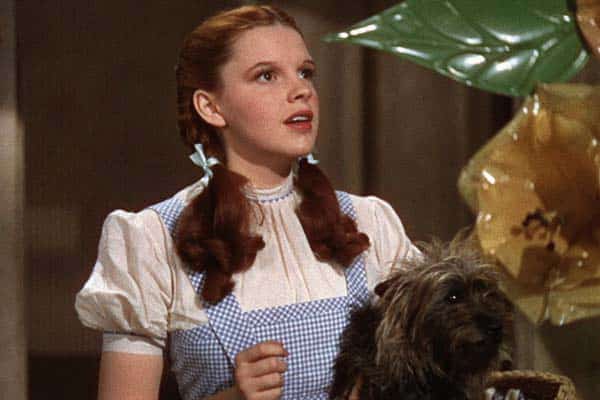

We have Dorothy, the Tin Man, Scarecrow, and Cowardly Lion. But, we cannot forget about Toto. The adorable part was played by a cairn terrier named Terry. The dog was owned and trained by Carl Spitz. And the adorable pooch made her big screen debut in 1934 with Ready for Love. Terry made bank during filming The Wizard of Oz. Her salary was $125 per week which works out to over $2,000 per week now, thanks to inflation. FYI: That is more than a lot of the actors made in the film ”” and in the movie industry in general at the time. But, Terry worked hard for that money. The talented dog did her own stunts. The poor thing became seriously injured when someone stepped on her foot and broke it. Thankfully, she recovered and went on to appear in a total of 16 films.
The 1939 film was not the first adaptation of the book.
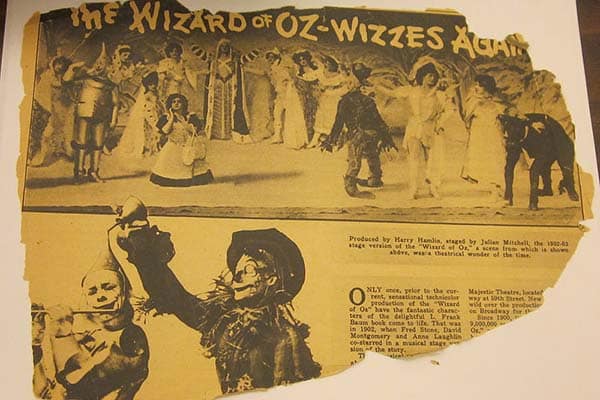

The Wizard of Oz has a long history. After the book The Wonderful Wizard of Oz was first published in 1900, it became a Broadway play just two years later. The Wizard of Oz play premiered in 1902. The success of the play in New York resulted in it touring for nine years. There was also an earlier silent film version dating from 1925. The 1939 film starring Judy Garland remains the most famous version and it will probably remain that way forevermore. There have been countless modern interpretations along with some unofficial and controversial ones throughout history because of copyright lapses.
The tornado was created using a lot of fabric.
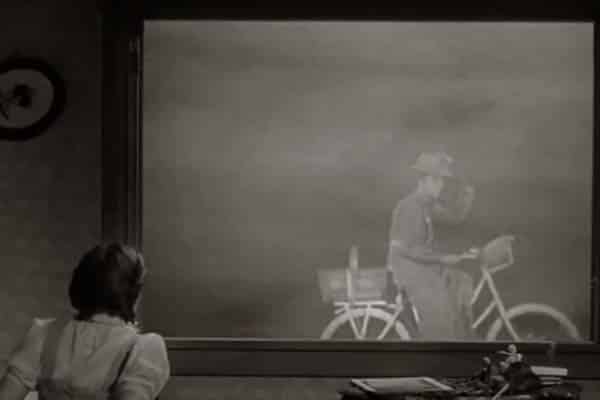

We can often take for granted how computer special effects can make filming easier in modern times. When filming The Wizard of Oz in the 1930s, they obviously didn’t have that luxury. The special effects director of the film, Arnold Gillespie, had to come up with some inventive solutions and test them out. In the case of the iconic tornado, the clever Arnold used 35 feet of muslin cloth hung over a steel gantry crane and connected to a rod. When moving, the rod and gantry crane made the fabric look like a terrifying tornado in motion. Some Fuller’s earth (clay material) completed the effect of the natural disaster. Dorothy’s house was a maquette or scale model.
Dorothy’s iconic pinafore dress was really pink and blue.
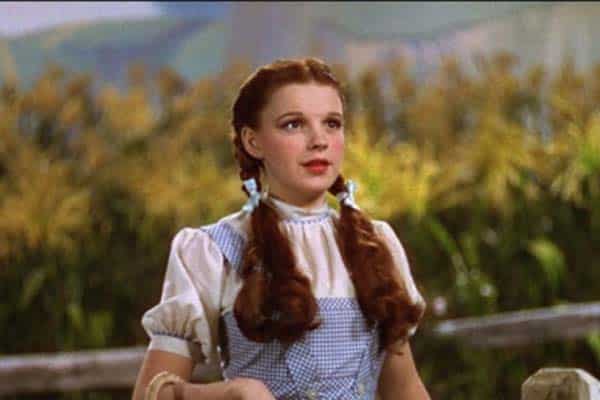

Sorry, everyone who has ever dressed up as Dorothy for Halloween and worn a light blue and white gingham dress. Your outfit wasn’t actually technically accurate. The character’s iconic look was really blue and light pink. The reason is that the pale pink shade read better as white in Technicolor film. (The film style would become known for its use of saturated colors.) Remember, that the film was released way back in 1939 when movies, in general, were a new thing ”” never mind movies in color! But, it seems that the movie pros had already come up with tricks of the trade for our viewing pleasure.
The Emerald City horses were given their distinctive colors thanks to Jell-O.
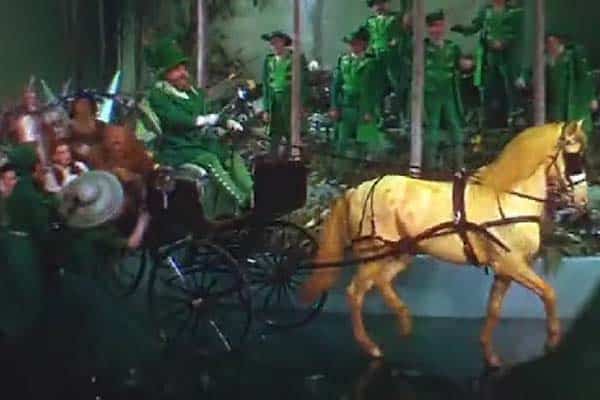

Wondering where to find a Horse of a Different Color? Instead of searching for the elusive Emerald City, check out a Jell-O packet. The horses in the film were given their vibrant colors with a paste made out of different colors and flavors of Jell-O. (We’ve heard of people temporarily dyeing their hair with Jell-O in recent times so perhaps the hack can be attributed to The Wizard of Oz?) The effect was very striking, especially with the punchy Technicolor film. However, the crew had to film the scenes with the horses quickly because the animals wanted to lick up the Jell-O. At least the dessert was a safer thing compared to some of the questionable substances used in the film’s production…
The movie bagged an Oscar.
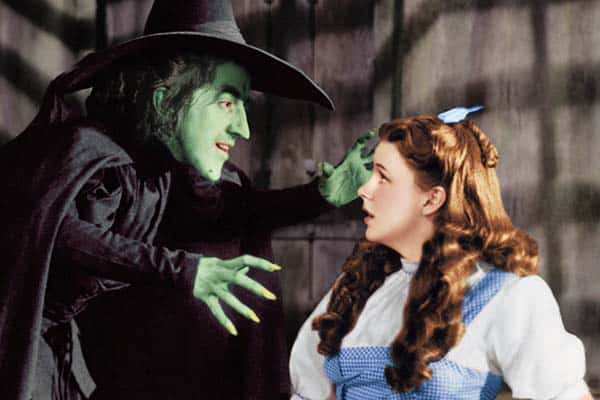

The Wizard of Oz probably wins for one of your family’s favorite movies. It also received critical success by winning for Best Music, Original Song at the 1940 Academy Awards. Judy Garland received a special honorary Academy Juvenile Award for her work on the film as well as 1939’s Babes in Arms. Furthermore, The Wizard of Oz was nominated for Best Music, Original Score; Best Art Direction; Best Effects, Special Effects; and Best Picture. Wondering what movie managed to beat The Wizard of Oz in the Best Picture category? That honor went to Gone with the Wind. Wuthering Heights was also nominated in the category the same year, too.
The Wicked Witch actress was badly injured while filming.
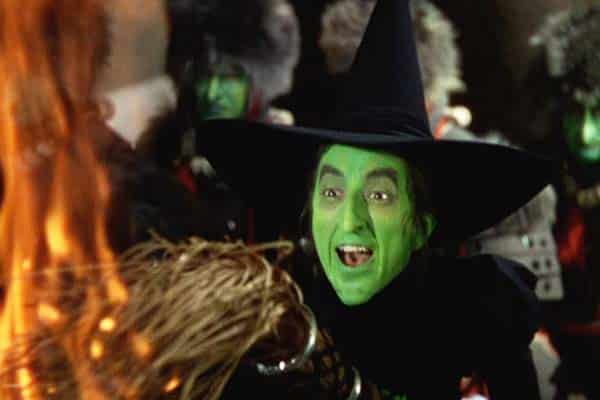

Margaret Hamilton played the iconic part of the Wicked Witch of the West. Unfortunately, she was another cast member who had some trouble while filming The Wizard of Oz. The American actress ended up in hospital after a stunt went terribly wrong. When she is supposed to leave Munchkinland in a cloud of smoke and flames, viewers don’t see that Margaret really exited through an elevator to create the effect of her disappearing. During the second take, the flames reportedly ignited her copper-based makeup resulting in third-degree burns. Poor Margaret spent three months recovering from the horrible incident before she returned to work.
The Cowardly Lion costume was made out of real lion.
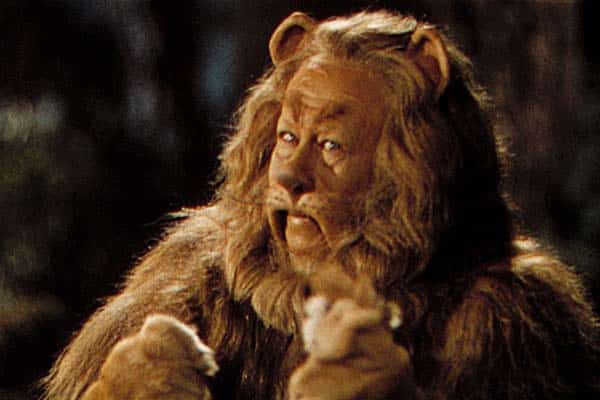

The Wizard of Oz lion costumes we pick up at the store (thankfully) aren’t anything like the original costume from the 1939 film. Actor Bert Lahr wore a costume that was made out of real lion fur. It has also been reported that the costume had lion skin and weighed a staggering 60 lbs, according to TLC’s Hunting for Treasure. Um, yeah. Remember what we said about scorching sets? You gotta feel for Bert wearing that massive, furry costume. In 2014, it was reported that the costume sold at auction for more than $3 million.
“There’s no place like home” was a line for the movie.


One of the most iconic moments in the history of cinema has to be Dorothy clicking her ruby red slippers and saying, “There’s no place like home.” So, it is pretty shocking to think that the original line wasn’t in the book. In Lyman Frank Baum’s The Wonderful Wizard of Oz, the line is, “Take me home to Aunt Em!” The original line still has all of the feels, but the movie quote is more general and meant that it could have more impact with the audience as a whole. Do you think that they made a wise choice in updating it?
Dorothy’s slippers weren’t originally red.
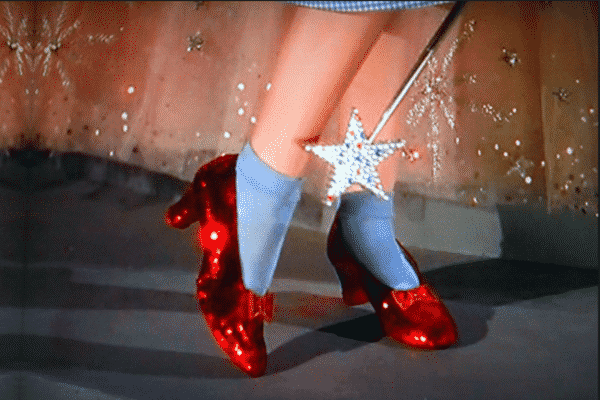

While we’re on the subject of shocking things relating to ruby red slippers, it will astound people doubly to hear that Dorothy’s iconic ruby red slippers weren’t originally red at all. That is another change that was made for the 1939 film. (There were a number of changes between the book and the 1939 movie.) In The Wonderful Wizard of Oz, Dorothy wears silver slippers. The Wizard of Oz was filmed in glorious saturated Technicolor film and it was reported that the producers wanted to use the expensive film-making technique to their full advantage. So, they went with punchy, glittery red slippers. History proves it was a wise choice.
Children were also cast as Munchkins.
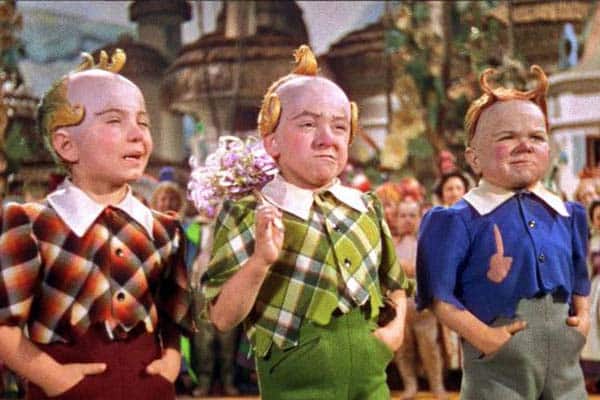

There were thought to be around 124 little people playing Munchkins in the classic film. (Their credits are available online if you want to find out what parts people played.) It is a massive number, but apparently it wasn’t quite enough. The Wizard Of Oz producers also cast around 10 young kids who were similar heights to the little people to be background actors. Sadly, the last living Munchkin actor passed away in 2018. Jerry Maren, who played the green Lollipop Guild member, passed away at 98. Some of the birth and death dates of the children Munchkin actors are not known so it’s not certain if any of them are still alive.
It was a box office bomb.
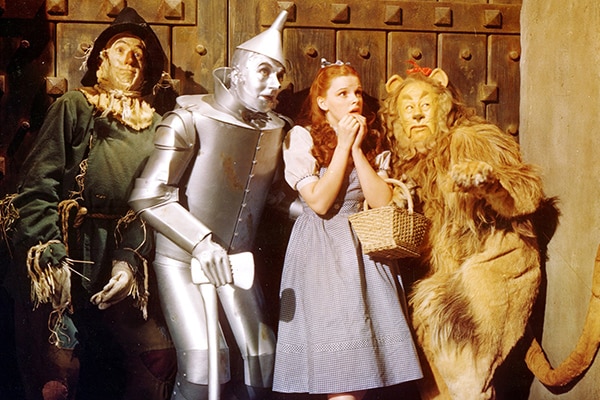

The Wizard of Oz has earned a spot in history as an iconic film, but it was not a box office smash hit in 1939. At the time, fantasy movies were considered risky and everyone in the production was aware of that. Additionally, the film was a massive investment using the costly Technicolor filming technique and all of the special effects. The movie had a budget of $2.8 million and it made just over $2 million in the United States and Canada. Foreign box office sales didn’t even hit $1 million. Re-releasing The Wizard of Oz earned the film more money. Same goes with discount tickets. And we cannot discount the cultural impact that it has had now. That’s priceless.
Gale Sondergaard was cast as the original the Wicked Witch of the West.
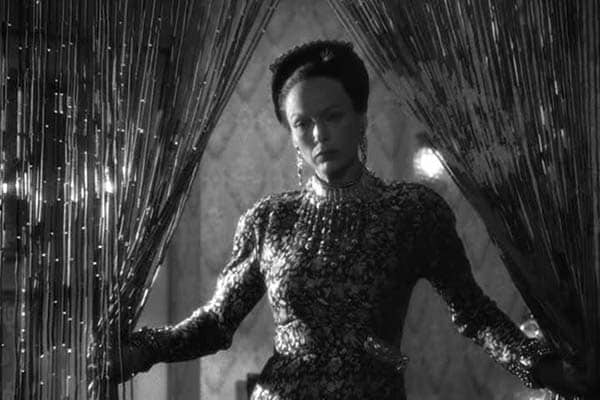

There was a lot of casting drama related to The Wizard of Oz. Another example is that Gale Sondergaard was originally picked to play the Wicked Witch of the West. During pre-production, the crew was toying with a few ideas of how they wanted to portray the iconic Wicked Witch. One idea was a more glamourous take inspired by the Evil Queen in Snow White and the Seven Dwarfs. The other version was the more stereotypical “ugly” witch that we’re all familiar with. When it was decided they would go in the latter direction, Gale was upset. She wanted to play a glamorous character and was concerned that playing a warty witch could negatively impact her career. So, she quit the film. That’s when Margaret Hamilton stepped in.
A lot of the movie was actually cut.


The Wizard of Oz could have been a very different and longer movie if all of the original material was left in. Producers were concerned about the film appearing too spooky for children so they decided to cut some of the “scary” stuff out. That included a number of scenes with the Wicked Witch of the West. (Yeah, the version we ended up with isn’t the scary one. Tell that to some five-year-olds.) Additionally, there were a couple of songs that didn’t make it into the final cut of the movie. They included a swing-style song called “Jitterbug.” Alas, the full-film performance of the song has been lost. We’re lucky to get silent rehearsals in some of the bonus features of VHS and DVD versions of the movie. Another shocking thing is that a reprisal of “Over the Rainbow” was cut. Seriously?!
Judy Garland wanted to keep Toto.
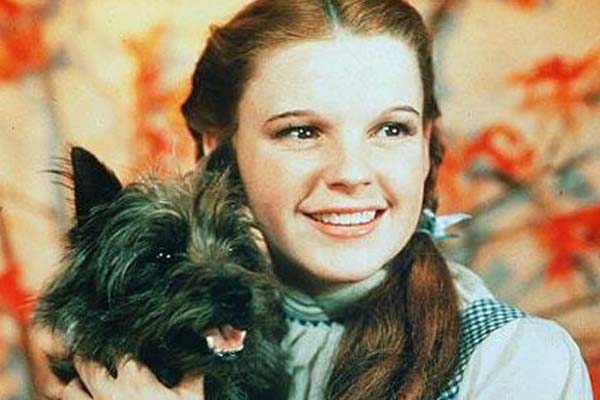

The love between Dorothy and Toto in The Wizard of Oz was more than acting. It is said that Judy absolutely loved Toto (real name: Terry). When poor Terry was injured during filming, it is reported that Terry recuperated at Judy’s house. The young actress wanted to keep Terry, but Terry’s owner Carl Spitz didn’t want to give up the adorable pooch. We’re sure it was for reasons of love. But, you have to factor in the time training Terry and the fact that she was racking in big bucks as a movie star dog. No one would probably want to give up that salary so easily.
Frank Morgan played multiple parts in The Wizard of Oz.
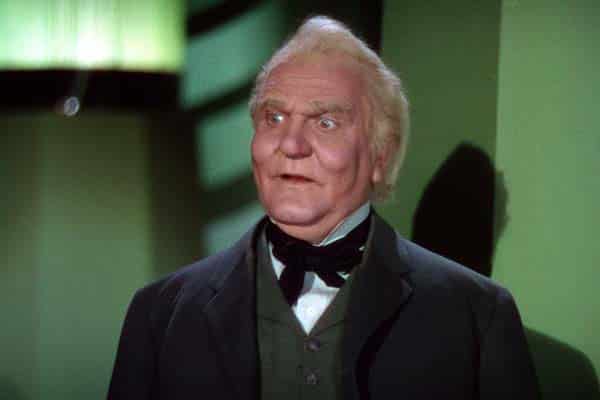

Here’s something for you and the kids to keep an eye out for next time you watch the movie: Frank Morgan appears as many characters in the film. He is credited with five different roles. His most famous part is the title character. (He was that scary angry face projection.) The talented American actor also played the Emerald City guard, the Emerald City gatekeeper (the one who initially refused to let Dorothy and her friends in to see the Wizard of Oz), Professor Marvel aka the carnival huckster, and a cabby/coachmen of the carriage drawn by The Horse of a Different Color. Phew. Here we thought that multitasking and actors having multiple jobs were new things.
There was a massive age difference between the witches.


Glinda the Good Witch of the North (Billie Burke) and the Wicked Witch of the West couldn’t have been more opposite in The Wizard of Oz. We see them more as frenemies of the same generation, but there was a surprising age gap between the actresses. Margaret Hamilton was 36 years old when she played the Wicked Witch. Billie was 54 when she played the Good Witch. Take a good look at the older actress when you’re watching the movie again. She clearly has magic or good genes on her side ”” or both. Glinda the Good Witch doesn’t look a day over 30.
There was a lot of discussion in figuring out the best Yellow Brick Road.
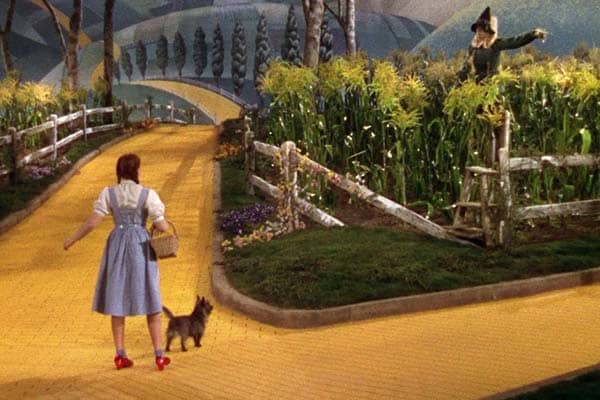

The beautiful Technicolor film-making was an integral part of the big-budget production of the 1939 movie. Everyone wanted to make sure that everything looked its best which is why the art department wanted to ensure that they had the perfect shade of yellow for the Yellow Brick Road. The Wonderful Wizard of Oz book by Lyman Frank Baum did feature a “Road of Yellow Bricks” that was reportedly inspired by roads the author had seen in Michigan where he spent his summers as a kid. But, it seemed to come down to aesthetics with the movie crew rather than the author’s source. A week was reportedly spent deciding what was the best yellow for the now-iconic road.
The Scarecrow and the Cowardly Lion’s makeup were very innovative.
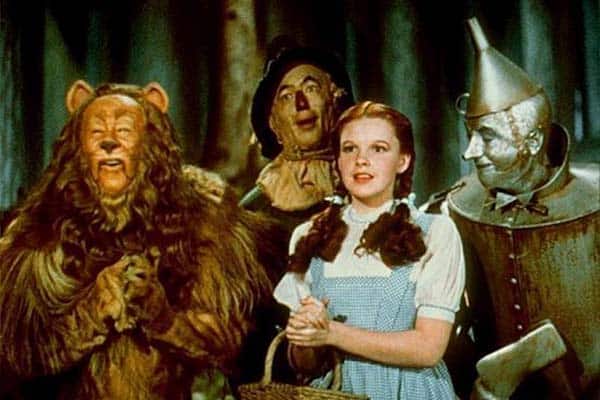

The makeup and costumes of the iconic film were boundary-pushing for the time. They might not have always worked out 100 percent, much to some poor star’s determent. The film’s makeup artist Jack Dawson was one of the first to use a foam latex makeup technique (A lightweight version of prosthesis that allows makeup artists to change the facial features of a person). He used it to give the Cowardly Lion (Bert Lahr) and the Scarecrow (Ray Bolger) their signature lewks. The technique reportedly wasn’t 100 percent perfected in the early days. It’s said that Ray ended up with permanent lines on his face from the prosthesis and the glue used to apply them. Some reports say that the marks did eventually disappear months after filming.
Margaret Hamilton was on a liquid diet when she was playing the Wicked Witch.
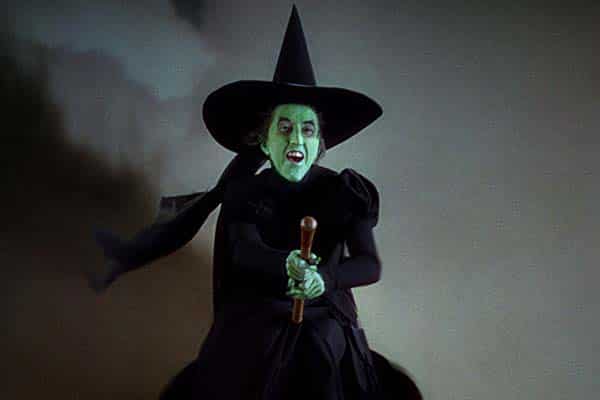

Poor Margaret Hamilton’s job playing the Wicked Witch of the West sure wasn’t easy. Besides sustaining serious injury on set, the actress was on a liquid diet while filming. It did not have anything to do with weight. The extreme diet had to do with her makeup. Margaret’s iconic green face paint was actually copper-based. Due to the toxic levels of the makeup, Margaret maintained a liquid diet while she was filming. There are obviously so many things that could be said about changing makeup and why something like that was put on an actress’s skin.
There were director changes during filming.
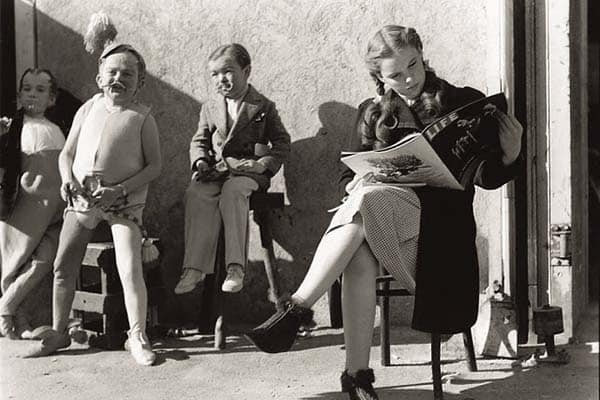

This is one of The Wizard of Oz behind the scenes secrets that passes many viewers by because we don’t know what went on behind the camera. Academy Award-winning director Norman Taurog filmed a few Technicolor tests for the projects before he was “reassigned.” When filming properly began in October 1938, it was with Richard Thorpe as the director. Film director George Cukor spent a week on set serving as a “creative advisor,” but he technically didn’t film anything. He had previous commitments to Gone With the Wind so he left The Wizard of Oz to focus on that. Victor Fleming took over the main directing duties in November 1938 and opted to stick with the direction that Cukor had put in motion.
Everyone kept quiet about what happened to the original Tin Man.


Poor Buddy Ebsen ended up in the hospital from his toxic Tin Man makeup and was forced to drop out of filming. But, this key piece of information was kept on the down-low. Obviously, the film studio didn’t want any bad press and saying that one of your crew has been hospitalized because of toxic chemicals in their makeup definitely isn’t anything you want to go around talking about if you don’t have to. Jack Haley allegedly thought that Buddy was fired from the production. Of course, that is not the thing that an actor would want to ask. The truth about what happened to Buddy did eventually come to light.
It’s thought ten pinafore dresses were made for Judy Garland to play Dorothy.
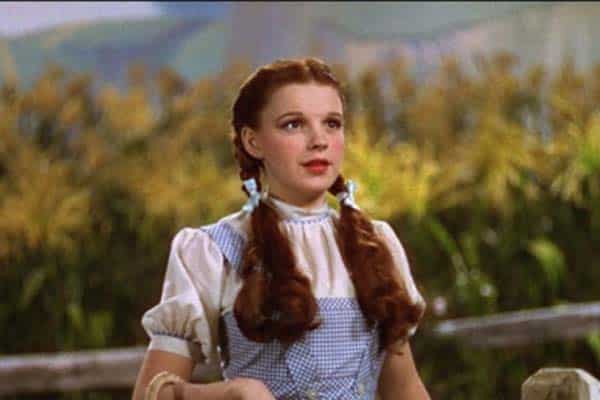

Some actors and actresses have one outfit and that is the thing they were for hours and hours of filming. Judy Garland was lucky that she had multiples of her iconic The Wizard of Oz pinafore dress. It is thought that ten of the blue and light pink/white gingham dress were made for the 1939 film. The dress was made by MGM’s famous mononymous costume designer, Adrian (full name: Adrian Adolph Greenburg). Needless to say, the dresses that are still around today command exorbitant prices at recent auctions. Case in point: A sweat-stained dress was sold for a whopping $1.5 million at an auction in 2015.
There is a 1925 silent version of the film.


There is not only one movie version of The Wizard of Oz. Many of us are familiar with more modern spin-offs, but we don’t mean those. There was a 1925 silent movie that was released before the 1939 film many of us think of as being the “original” The Wizard of Oz. The silent movie ranged from 85 to 93 minutes, depending on what edition was shown. It starred Dorothy Dwan as Dorothy, Larry Semon as the Scarecrow, and Oliver N. Hardy as the Tin Man. (Hardy is, in fact, one half of the comedic double act Laurel and Hardy.)
Auntie Em and Uncle Henry are the only characters from Kansas not to have alter egos.
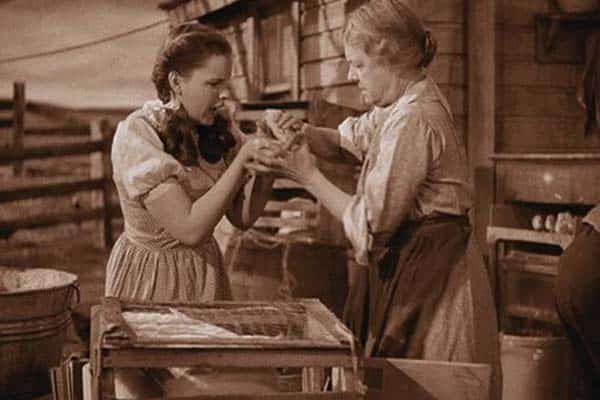

This is something you might have picked up on. Auntie Em (Clara Blandick) and Uncle Henry (Charley Grapewin) are the only characters in The Wizard of Oz who appear in Kansas but don’t have alter egos in Emerald City. There are some fan theories that suggest Auntie Em’s alter ego is Glinda the Good Witch of the North, but the studio reportedly didn’t ever have the intention of Clara playing the part of the Good Witch. It’s rumored that they wanted the characters to be different ages. And Clara was eight years older than Billie in real life. It didn’t really matter because Clara’s smaller role as Auntie Em is still iconic and Billie Burke held her own as the Good Witch.
The Munchkins varied in height by a considerable amount.
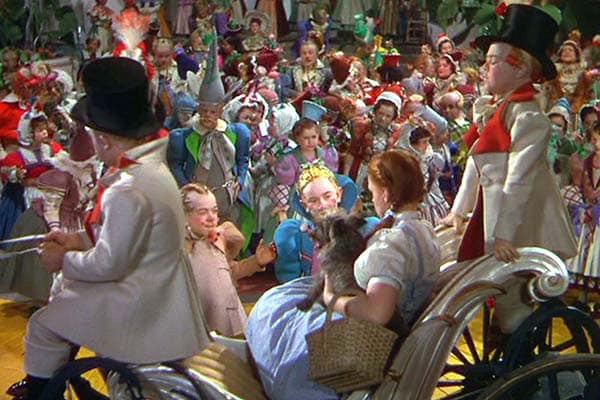

This is one of The Wizard of Oz behind-the-scenes secrets that we might not have noticed while watching the film. Most of the Munchkins seem to be of similar height, but there was a surprising variance in height in the little-people actors and actresses that were cast in the parts. (The child actors aren’t even factored in.) As previously mentioned, there were over 120 people cast as Munchkins. The little people ranged from 2’3″ to 4’8.” That’s over two feet difference between the shortest actor and the tallest one. See if you and the kids can spot the height differences when you inevitably watch the movie again.
Judy Garland originally wore a blonde wig to play Dorothy.
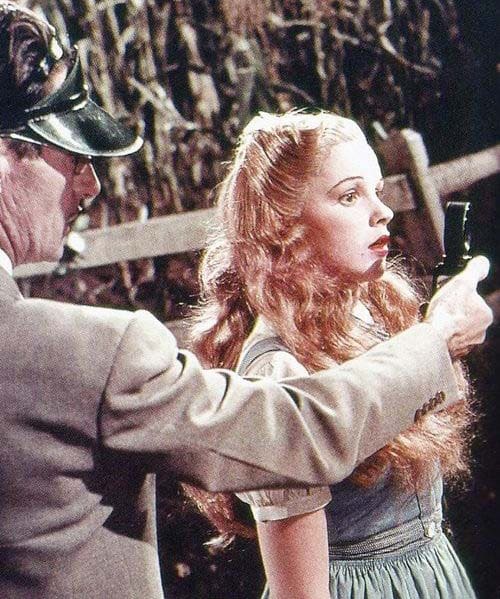

Judy Garland may have likely been the first choice to play Dorothy, but there were still experiments with the character’s image. During pre-production for the film, Judy originally wore a blonde wig and heavy makeup to portray the character. (The thick makeup and glamorous blonde hair were different from the image of the farm girl in the Oz books.) It was eventually decided that Judy should stick with her natural auburn hair and have a more understated makeup look. There are photos of the young actress wearing the wig for screen tests. And some of the wigs have even hit the auction block in recent times.
The Singer Midgets were in the film
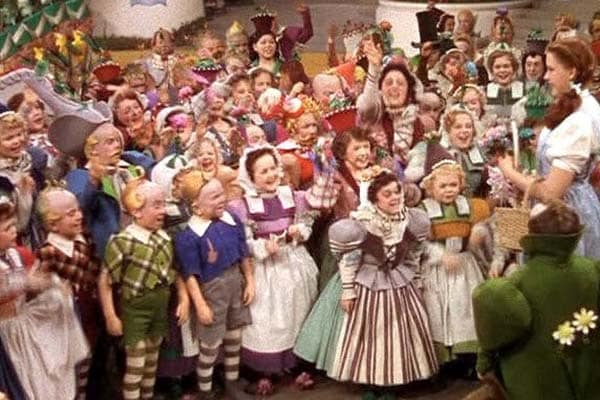

The name The Singer Midgets might not be recognized today, but they were a popular vaudeville group in the first half of the twentieth century. There were between 18 and 30 participants in the group during their time as performers. They were a very talented group and trained as acrobats, singers, and dancers, which made them perfect for appearing in the iconic film. Austrian-born Leo Singer was the group’s manager and is credited to helping them get in The Wizard Of Oz. The only glitch was that The Singer Midgets were of European descent, and most of them were Bavarian, and they did not speak English. This obviously would have caused some confusion when instructions were being given for a scene.
Judy Garland’s blue plaid dress was chosen because it made her look younger.
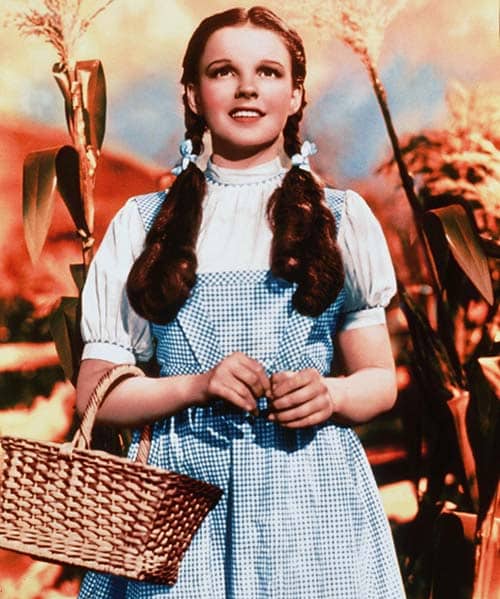

The Wizard of Oz costume decisions were big things, especially when it came to Dorothy’s outfit. Besides wanting to show off the bold Technicolor filming, Dorothy’s clothes also had to be youthful. This is apparently why the costume designers selected a gingham dress for Judy to wear. It was young and the small check fabric had a “blurring quality” which was supposedly a good thing for contributing to a girlish look. Some reports suggest that Judy wore a tight-fitting corset to give her the appearance of having a more “youthful” figure. Remember that the actress was 16 when she was cast in the part and 17 when they started filming. Why the heck did she need to look even younger?!
George Cukor made many influential changes.
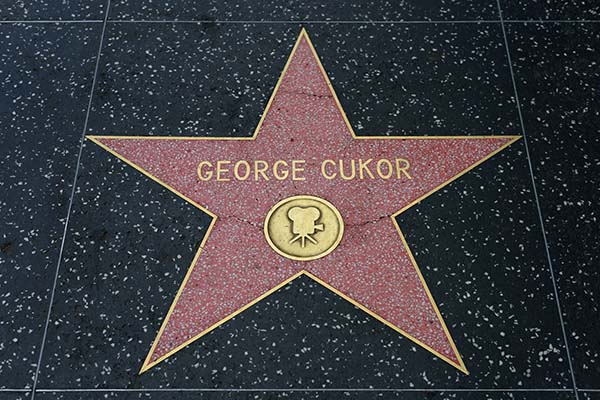

George Cukor was only around for a week when he served as “creative advisor” for the 1939 iconic movie, but he helped shape the film into what it is. One of the big decisions the American film director made was that he nixed Dorothy’s blonde wig. He thought that it worked better for the character to keep Judy Garland’s natural hair color. Furthermore, he softened the dramatic makeup look. Cukor also made changes to the Scarecrow’s makeup and to the Wicked Witch of the West’s appearance. So, we can thank him for giving us the characters we know and love. Imagine what he would have done if he was around for more of the production.
Asbestos was used to achieve some of the special effects in the film.
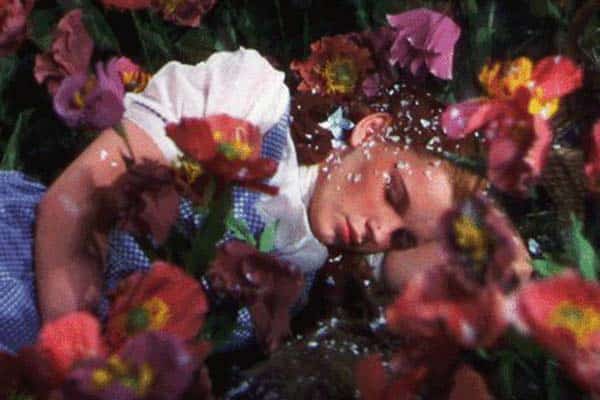

There is absolutely no way that some of the things done while filming The Wizard of Oz would be allowed today. But, we have to remember that it was a different time and people didn’t have the awareness, information, or strict Health and Safety rules that we do now. That can explain in part why asbestos was used in the 1939 movie to achieve some of the special effects. The now-infamous cancer-causing fibrous material was used as snow and for the Wicked Witch’s broomstick. Remember the scene where Dorothy sleeps in the field of poppies with snow? That’s asbestos. Yikes.
There were over 100 munchkin costumes.
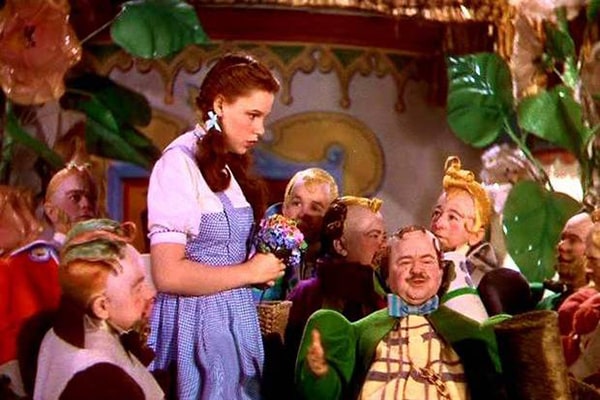

This is one of The Wizard of Oz behind-the-scenes secrets that will make you wish you could have seen what was going on behind the camera. The casting, preparation, and filming of the Munchkins in Munchkinland was a massive undertaking. After casting all of the little people in the roles, costume designer Adrian and his department had to design and makeover 100 costumes for the scene. Then they had to catalog what each actor and actress was wearing for consistency. Remember that this was before computers, people. Additionally, there were countless different Munchkin parts from farmers to members of the Lollipop Guild to villagers to those in the army.
The Tin Man’s oil and tears were chocolate.
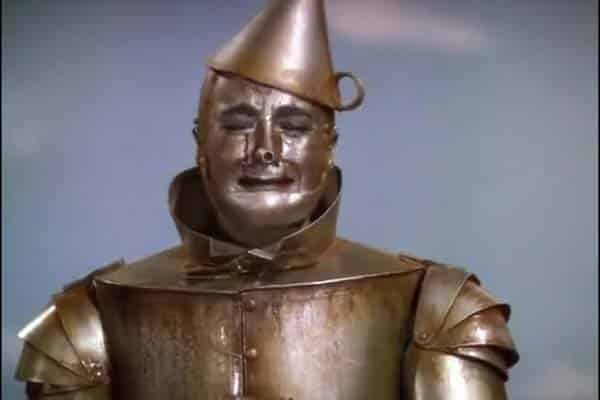

The Tin Man didn’t cry regular tears like Dorothy. (That would have caused rust problems.) The Tin Man cried machine-oil tears. Given some of the previous makeup problems, some viewers might think that actor Jack Haley had real machine oil on his face. Thankfully, he didn’t. He had a more delicious alternative: chocolate. We aren’t sure how chocolate and tin would have actually gone together, but having chocolate stream down your face and come out of your “joints” sure beats almost any other substance. Mind you, it wouldn’t have been very good if the actor had chocolate cravings and it definitely wouldn’t have helped everyone smelling delicious chocolate on the hot, hot set.


